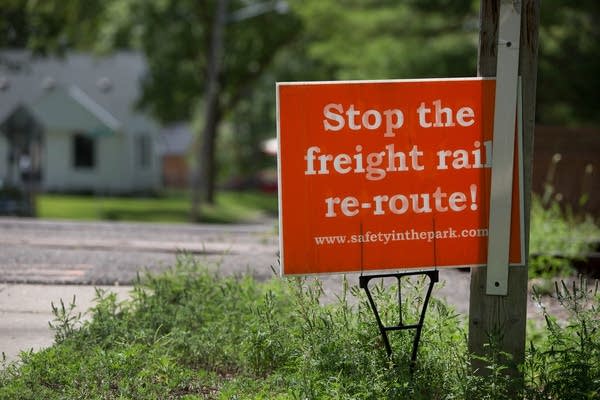Critics call for rerouting Southwest Light Rail
Go Deeper.
Create an account or log in to save stories.
Like this?
Thanks for liking this story! We have added it to a list of your favorite stories.

As a Minneapolis resident who lives just blocks from the chosen Southwest Light Rail route, Patty Schmitz has closely watched elected officials and transit planners toil over how to resolve a dispute over the proposed line.
Schmitz thinks planners have come up with three really bad options to resolve a longstanding stalemate over where to put existing freight rail lines. But she never considered that the LRT route could be challenged late in the planning process.
"All along we've said they're not going to re-open the alignment; it's not going to happen," she said. "Everyone is saying it's a done deal."
But soaring costs and the freight rail dilemma are prompting some critics to demand that light-rail planners slow down the planning process. When a recent Minneapolis Star Tribune editorial questioned where planners wanted to place the route, Schmitz and other members of LRT Done Right gained hope that the plans would change. The group demands that light-rail planners go back to the drawing board.
Turn Up Your Support
MPR News helps you turn down the noise and build shared understanding. Turn up your support for this public resource and keep trusted journalism accessible to all.
"I think we all wanted to jump up and down with joy," she said.

Planners are trying to determine whether to bury in the light rail trains in a deep or shallow tunnel along the Kenilworth corridor of Minneapolis, where bicyclists zip by on trails that run parallel to train tracks. Another option would reroute existing freight traffic to St. Louis Park.
Both of the tunnel options are controversial -- and neither comes cheap. Under the more expensive scenario, the original cost estimates for the project jump from about $1.3 billion to $1.8 billion.
Planners chose the Kenilworth route years ago after considering the project's cost and potential ridership to satisfy federal criteria that have since changed. Schmitz notes that the route skirts the heart of the Uptown area of Minneapolis, which is teeming with new condos and apartments.
"It would just make so much more sense if it went down an area where there is more populace," she said.
Planners did consider such a route, one in which trains would roll down the Midtown Greenway and veer toward downtown on Nicollet Avenue.
"This isn't something new. This Midtown-Nicollet whatever is not new!" said Jim Brimeyer, a Metropolitan Council member who represents St. Louis Park and other areas. "It's been looked at. It's been done."
"We've heard everything, we've studied everything... Now I think is the time to move on and get this done."
He said planners threw out the Uptown route not only because of its hefty price tag, but also because it would have disrupted businesses and historic properties.
Brimeyer and other members of a key advisory board for the project aren't entertaining the idea of a new route. Hennepin County Commissioner Gail Dorfman said simply because the freight rail issue has created an impasse doesn't mean planners should start from square one.
"We've heard everything, we've studied everything," Dorfman said. "Now I think is the time to move on and get this done."
Many people close to the project say picking a new route isn't likely at this point. The Met Council contents that would strike the Southwest line from the competitive queue for federal transit projects, and each year of delay could add up to $50 million in costs. The project also risks losing funding if it can't resolve major decisions.
Even Minneapolis Mayor R.T. Rybak, who once supported the Midtown-Nicollet route, is standing firmly behind the current alignment. Peter Wagenius, the mayor's policy director, said future transit proposals call for adding streetcar service to Nicollet Avenue and rail service along the Midtown Greenway.
"What we really want to see in this region is a system where you have more ridership in the system as a whole than on any individual line because of how well all the routes work as a system," Wagenius said.
In neighboring St. Louis Park, residents worry that the Met Council will move forward with the last of three options: relocating freight trains through their city. Planners have suggested running the lines on a hill as tall as two stories high.
Jami LaPray, a member of the group Safety in the Park, said running the track through a neighborhood near a school is worrisome.

"The troubling portion of this is the fact that it's on the berm," LaPray said. "And if there were to be a derailment, logic tells us tells us it would be catastrophic, having a 270,000 pound rail car tumbling down a side of a hill."
But unlike some of her counterparts in Minneapolis, LaPray isn't calling for a reroute of light-rail from Kenilworth. She said it's time to move the project forward.
The Met Council is expected to decide on the freight issue in late September.





